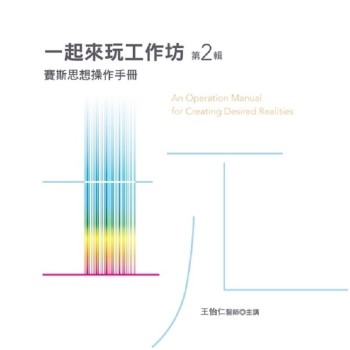How did Bitcoin price increase 1,200 times in only a decade? Why can a virtual image be sold for as high as HK$500 million? How did Dogecoin once become the fourth largest digital asset in terms of market cap, after being created for fun? Understanding the development of blockchain and crypto assets and how to make good use of its decentralized technology can protect individual wealth effectively and be an edge against the inflation caused by central banks, and sometimes also be a shortcut to get rich. Cryptocurrencies, including Bitcoin, Ethereum, and many others, have been mushrooming in recent years. Blockchain technology has also evolved from 1.0 to 3.0. How can you identify and seize these new opportunities? This book gives a brief explanation of the development course of blockchain and crypto assets, an analysis of the industry ecosystem, a framework for institutional investors to manage their portfolios, and an outlook on the development direction of this industry in the coming years. It aims to provide readers with a whole picture of the development of this new industry, and a summary and reference (not financial advice) for making informed investment decisions.
作者簡介:
About HashKey Capital
HashKey Capital is an institutional asset manager investing exclusively in blockchain technology and crypto assets. As one of the most experienced global blockchain investors based in Asia, HashKey Capital have contributed a wealth of knowledge to the blockchain ecosystem in the region by building a network connecting entrepreneurs, investors, developers, community participants, and regulators.
With industry-leading expertise and skills, HashKey Captial has a deep understanding of blockchain technology, decentralized finance, and the crypto assets ecosystem and a proven track record of investing in high-growth companies, at the same time focusing on identifying target projects with unique technologies, disruptive businesses, and long-term upside potential.
Haskey Capital is affiliated with HashKey Group, a leading digital asset management, and financial services institution in Asia. Headquartered in Hong Kong, HashKey Group has offices also in Singapore and Tokyo. Wanxiang Blockchain is a strategic partner of HashKey Group, providing advanced and high-end blockchain research, developers, and technical resources. Wanxiang Group is a global industrial and financial services group that comprises a conglomerate of businesses, including Wanxiang Blockchain and affiliated companies like HashKey Group.
作者序
Preface
Crypto asset investment: From the fringes to the mainstream
David Swenson, who was back to the Investment Office of Yale University in 1985, grew Yale’s endowment fund from US$1 billion to the current US$31 billion in approximately three decades. Swenson’s death in May 2021 has prompted an outpouring of tributes from investment professionals globally. He is considered the “godfather” of the institutional investment, who pioneered the “Yale model” that has been massively adopted by the investment circles.
Typically, university endowment funds are considered to adopt the most conservative investment style worldwide. However, David Swenson has reformed a set of rules and introduced three new initiatives in the fund’s allocation and portfolio: first, allocation of capital into alternative investments such as venture capital, private equity, and hedge funds into the portfolio; second, embracing physical assets such as commodities and even forest land into fund allocation; and third, expanding the investment horizon into emerging markets. Swenson’s foresight and wisdom are at the core of why the Yale Endowment stands out for its long-term steady returns.
Alternative assets and alternative investment strategies are always an evolving methodology. There is no best, only better. Since Bitcoin was introduced in 2009, a new asset class – crypto assets – has begun to attract the attention of investors. We can still recall that in 2010, someone paid 10,000 Bitcoins for two pizzas. As of early 2022, one Bitcoin is worth around US$40,000. Not to mention the overall market capitalization of crypto assets is close to US$2 trillion.
This is the right time! As professional investment institutions or qualified investors, we can no longer afford the opportunity cost of ignoring crypto assets as an alternative asset. We should seriously explore whether and how we can include crypto assets into our portfolio and develop alternative strategies for crypto asset investment with an optimistic attitude towards new technologies, new trends, and new worlds. On August 6, 1991, Tim Berbers-Lee publicly introduced the World Wide Web (WWW) on the Internet. By around 2000, just ten years later, when the current Internet giant market had largely taken shape, the stocks of these Internet companies were arguably the best-performing assets in the past 20 years. It has been just over a decade since the Bitcoin blockchain was born in 2009, and today blockchain technology is starting to mature and early blockchain use cases are starting to emerge. It is probably time for crypto assets to take over Internet stocks, and contribute with the best returns in the next two decades.
Eric Beinhocker, the Executive Director of the Institute for New Economic Thinking at the Oxford Martin School, in his book The Origin of Wealth tells an interesting story: when he went to Kenya to do fieldwork, the local Maasai asked about Beinhocker’s wealth, and when they learned that the professor’s family did not even have a single cow, they wondered how someone so “poor” could afford to travel such long distances to Kenya and take a camera appeared to be quite expensive. For a Maasai tribesman, wealth is measured in cattle. For people in modern society, it is measured by a string of characters in a bank account. In the future, people’s wealth will be measured in crypto assets inside their digital wallets.
According to Beinhocker, “wealth is created through an evolutionary process”. He noted that the explosion in wealth in human history began in 1750, and that “over 97 percent of total wealth was created in the just last 0.01 percent period of time of human history.” The professor believes that the underlying logic lies in the technological revolution represented by Newton’s theory and the social revolution led by Britain and the United States, which greatly accelerated the speed of wealth creation. Crypto assets, on the other hand, are the new form of wealth evolution – the digital form of wealth, under the general historical trend of the digital revolution of human society following the industrial revolution and the information revolution.
Starting from 2021, global crypto asset investment and trading have started to move from the fringes to the mainstream: major banks in Europe and the United States have launched custody services for crypto assets; the SEC has approved Bitcoin ETFs; various crypto asset private investment funds have exceeded a total of US$50 billion in AUM; many private banks or wealth management institutions have started to provide crypto asset trading and custody services for eligible clients; Visa, PayPal and even Apple Pay have integrated Bitcoin payments and transactions; Coinbase, the world’s largest digital currency exchange, has been listed on Nasdaq.
With the growing interest in crypto-asset investment, there is a real need for a comprehensive and in-depth guidebook on crypto-asset investment. HashKey Capital team has compiled the book, Blockchain and crypto asset investment guide, collecting years of pioneering investment experience in crypto-assets, in response to the demand of clients and the market. This book comes just at the right time and will benefit all in the crypto community.
Here I’d like to wish this book a great success!
Feng Xiao
Vice Chairman, China Wanxiang Holdings Co., Ltd.
Founder, Wanxiang Blockchain Labs
Preface
Crypto asset investment: From the fringes to the mainstream
David Swenson, who was back to the Investment Office of Yale University in 1985, grew Yale’s endowment fund from US$1 billion to the current US$31 billion in approximately three decades. Swenson’s death in May 2021 has prompted an outpouring of tributes from investment professionals globally. He is considered the “godfather” of the institutional investment, who pioneered the “Yale model” that has been massively adopted by ...
目錄
Preface Crypto asset investment: From the fringes to the mainstream
Foreword Blockchain and crypto asset investment – The start of a new revolution
Part 1Brief history of blockchain and encrypted assets
Chapter 1 The age of geeks: When encrypted assets were still unconventional toys
1.1 Genesis: Bitcoin was born from an economic crisis
1.2 The disappearance of Satoshi Nakamoto
1.3 Transactions: Early Bitcoin payment
1.4 Bitcoin was given a new role – A store of value
1.5 Community: The cryptopunks’ utopia
1.6 Blockchain and Bitcoin
1.7 Bitcoin copycats
Chapter 2 Early commercialization: The emergence of the crypto asset infrastructure
2.1 The emergence of commercial infrastructure
2.2 Early investors
Chapter 3 Twisted mass adoption: The ICO boom
3.1 ICO – A product of the blockchain gold rush
3.2 Ethereum – The world computer
3.3 The penalty from the SEC
Chapter 4 The boom and bust that didn’t hinder technological progress – The intergenerational development of blockchain technology
4.1 Constant technological iteration, blockchain 1.0-2.0-3.0
4.2 Entering the multi-chain and cross-chain era
4.3 The emergence of distributed applications
Chapter 5 The beginning of mass adoption
5.1 Historical similarities between blockchain and the Internet
5.2 A new step forward in global regulations
5.3 Diversified use cases
Part 2 Emerging industry and new participants – The composition of blockchain’s ecosystem
Chapter 6 The source of innovation – The public chain ecosystem
6.1 Public chains – The start of the blockchain industry
6.2 Tokens – The incentive layer for collaboration
6.3 Mining – The upstream of the blockchain ecosystem
6.4 Decentralized exchanges – Lucrative but controversial
6.5 Non-custodial wallet – Pure permissionless finance
6.6 Distinction between coin and token
Chapter 7Real products and users – Decentralized applications
7.1 dApps – Applications that genuinely belong to the blockchain
7.2 DeFi – Injecting vitality into blockchain
7.3 NFT – Bridging the physical world and the virtual world
Chapter 8 Serving mainstream institutions – The rise of the institutional crypto finance ecosystem
8.1 Custody – The uniqueness of virtual asset as opposed to financial asset
8.2 Insurance – An indispensable condition
8.3 Prime broker – Infrastructure serving institutional investors
8.4 Learning from traditional finance
8.5 Stablecoins – Real use cases but attracting regulatory attention
Chapter 9Active participation and enthusiasm of traditional institutions
9.1 Diem (Libra)
9.2 In-depth research of central banks worldwide
9.3 Digital RMB – The world’s leading CBDC DC/EP – Global leading CBDC initiative led by PBoC
Part 3 Framework, strategies and implementations
Chapter 10Blockchain asset valuation methodologies
10.1 Classification of cryptocurrencies
10.2 Cryptocurrency valuation models
Chapter 11 The framework for blockchain asset investment management
11.1 Fundraising – Investment opportunities and asset allocation
11.2 Investment – All-round and multi-angle participation
11.3 Management – An important phase to increase value
11.4 Exit – Token investment has its own special way
11.5 Compliant fund structures
11.6 Diversity of asset management
Chapter 12 Global major blockchain investors and use cases
12.1 The typical blockchain investors and investment strategies
12.2 Going mainstream – The listing boom of blockchain projects starts
Chapter 13 Outlook on blockchain investment for the next decade
13.1 The next generation of blockchain comes from an iteration of technology and finance
13.2 The direction of investment in the next decade
Appendix Glossary
Preface Crypto asset investment: From the fringes to the mainstream
Foreword Blockchain and crypto asset investment – The start of a new revolution
Part 1Brief history of blockchain and encrypted assets
Chapter 1 The age of geeks: When encrypted assets were still unconventional toys
1.1 Genesis: Bitcoin was born from an economic crisis
1.2 The disappearance of Satoshi Nakamoto
1.3 Transactions: Early Bitcoin payment
1.4 Bitcoin was given a new role – A store of value
1.5 Community: The crypto...












